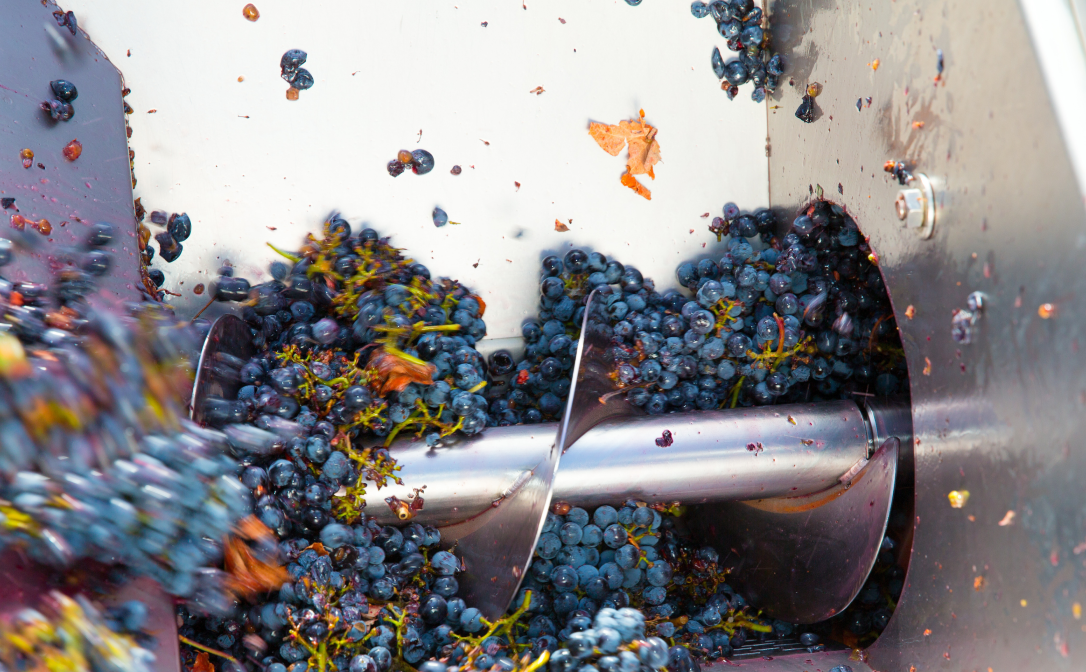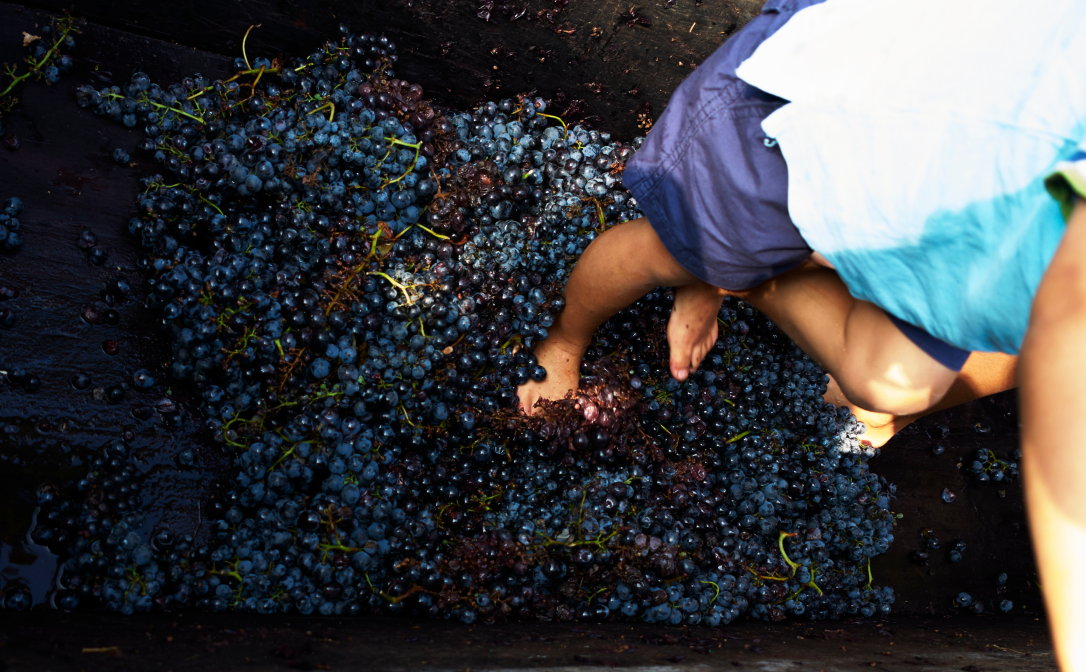In today’s high-tech world of winemaking, where modern machinery and scientific precision dominate, the image of winemakers stomping grapes with their bare feet might seem like a charming relic of the past. However, foot treading, an ancient technique dating back thousands of years, still holds a special place in the hearts (and practices) of some of the world’s most discerning winemakers. But why do they continue to embrace this traditional method?
At the core of winemaking is the process of stomping grapes, a critical step that releases the juice needed for fermentation. This process requires just the right amount of pressure—enough to break the skins without crushing the seeds, which can introduce unwanted bitterness. Traditionally, this delicate task was performed by human feet, a method that remains surprisingly effective even in today’s advanced winemaking world.

A modern crusher-destemmer in action.
For many winemakers, especially those focused on artisanal and premium wines, foot treading has never gone out of style. These producers have long recognised that the human foot, with its soft, even pressure, is ideal for gently breaking the grape skins without damaging the seeds. This careful handling results in wines with a more refined balance of flavours and tannins.
In regions like the Douro Valley of Portugal, foot treading has always been the gold standard in the production of premium Port wines. Historically, large teams of workers would tread grapes in shallow granite troughs called lagares, a practice that could last for hours. While modern methods have largely taken over, some high-end Port producers continue to use foot treading for their top-quality offerings. This continued use in such a prestigious wine category underscores the enduring value of the technique.
Boutique wineries around the world also embrace foot treading, particularly those focused on small-batch production. These producers see foot treading as a way of enhancing the quality of their wines, allowing for gentle extraction and more nuanced control over the fermentation process. For them, it’s not just about maintaining a tradition; it’s about making the best wine possible through methods that connect them closely with their craft.
Interestingly, the romantic and historical appeal of foot treading has also become a powerful marketing tool. Some wineries use the story of traditional foot treading to create a unique selling point for their wines, appealing to consumers who are drawn to authenticity and heritage. This helps keep the practice visible and relevant, even if it’s not the most common method in the industry today.
Interested in the basics of winemaking? Then click to find out more about our WSET Level 1 Award in Wines.
Is crushing grapes with feet hygienic?
The thought of feet in your wine might raise some eyebrows, but rest assured, foot treading is a perfectly safe method when proper winemaking practices are followed. Before treading, participants typically wash their feet, but even without this step, the process remains safe. Almost no human pathogens can survive in the high-alcohol environment of wine. This safety factor is one reason why wine has been such a culturally significant and reliable beverage for centuries. Some modern winemakers even opt to wear rubber boots during foot treading, offering an extra layer of assurance, but whether bare-footed or booted, the result is the same.

So, the next time you enjoy a glass of wine, consider the centuries-old tradition that may have played a role in its creation. Foot treading, while not the dominant method of winemaking, remains a cherished practice for many.


